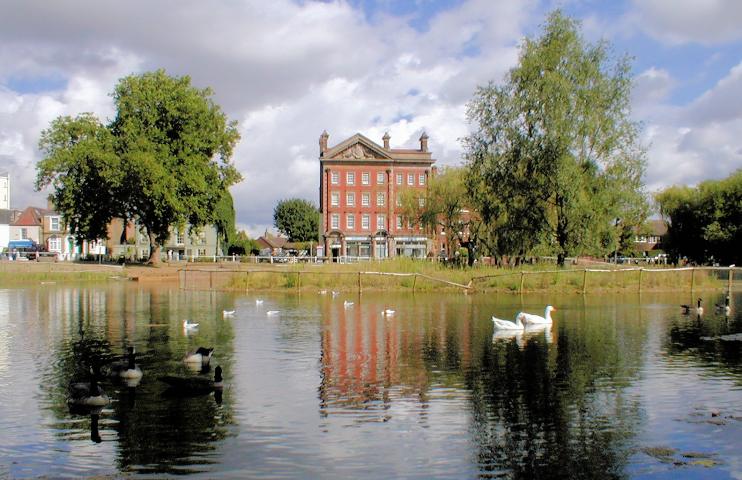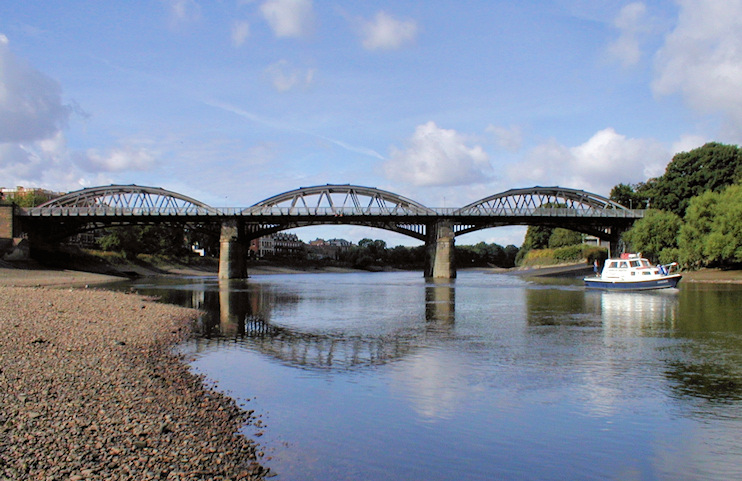Barnes
Barnes, Richmond upon Thames
A classy riverside settlement situated to the north-west of Putney

This was the place of the barn or barns that stored grain for the manor of Mortlake, and the first authenticated appearance of its name was in Domesday Book. When Barnes became a manor in its own right, under the ownership of the dean and chapter of St Paul’s Cathedral, the manor house was built at Barn Elms and was later enlarged into an aristocratic mansion.
Further inland, Barnes remained a remote farming community for several centuries. The most noteworthy event was a dispute in 1589 that resulted in the men of Barnes refusing to let their Putney neighbours continue to share Barnes Common with them.
Perhaps surprisingly, given its proximity to the Thames, the village developed around the green, which had three ponds. Milbourne House has faced the green since the 15th century, albeit in several incarnations.
The parish had around 200 residents by 1600 and at least two inns by 1637. Barnes Street, now Barnes High Street, was in existence by 1700. Several villas and mansions were built in the 18th and early 19th centuries, notably along the riverside on the Terrace. The population had grown to 860 by the time of the first census in 1801.
The Barnes peninsula was especially isolated until the opening of Hammersmith Bridge in 1827, affording its market gardeners improved access to their primary market and bringing residential potential to the locality later called Castelnau. The arrival of the railway in 1846 opened up the wider district to development. The original station building survives, making this one of the oldest such structures in Greater London.

Shown in the photo above, Barnes Bridge was built in 1849 to carry the loop line of the London and South Western Railway across the Thames to Chiswick, bringing a second station to the village. An embankment was constructed to raise the line as it approached the bridge, blocking the riverside path.
At this time, much of the waterfront area was still covered by market gardens. These were sold in 1865 to the British Land Company, which laid out a tight network of terraced cottages.
Over the next hundred years middle-class suburban developments filled the area more densely, together with some later pockets of council housing. St Mary’s church was devastated by a fire in 1978 and has been completely rebuilt, but with great sympathy for its medieval origins.
Much of the village is now designated the Barnes Green conservation area. This is a popular place of residence for established figures in the arts and media, and Barnes High Street and its offshoots have individually-owned outlets specialising in foodstuffs, interior design and fashion. There’s another little cluster of shops and cafés on Church Road, just east of the junction with Grange Road.
Only the Grand Pond survives from the original trio at the heart of the village – and it’s now called Barnes Pond. Barnes Fair is held annually on the green on the second Saturday of July.
The novelist and dramatist Henry Fielding lived briefly at Milbourne House in the mid-18th century before leaving for southern Europe in a vain attempt to improve his failing health.
The rock star Marc Bolan was killed in a car crash on Queens Ride in 1977 and the sycamore tree that his car hit became the site of a shrine to his memory. The tree was felled in 2015.
